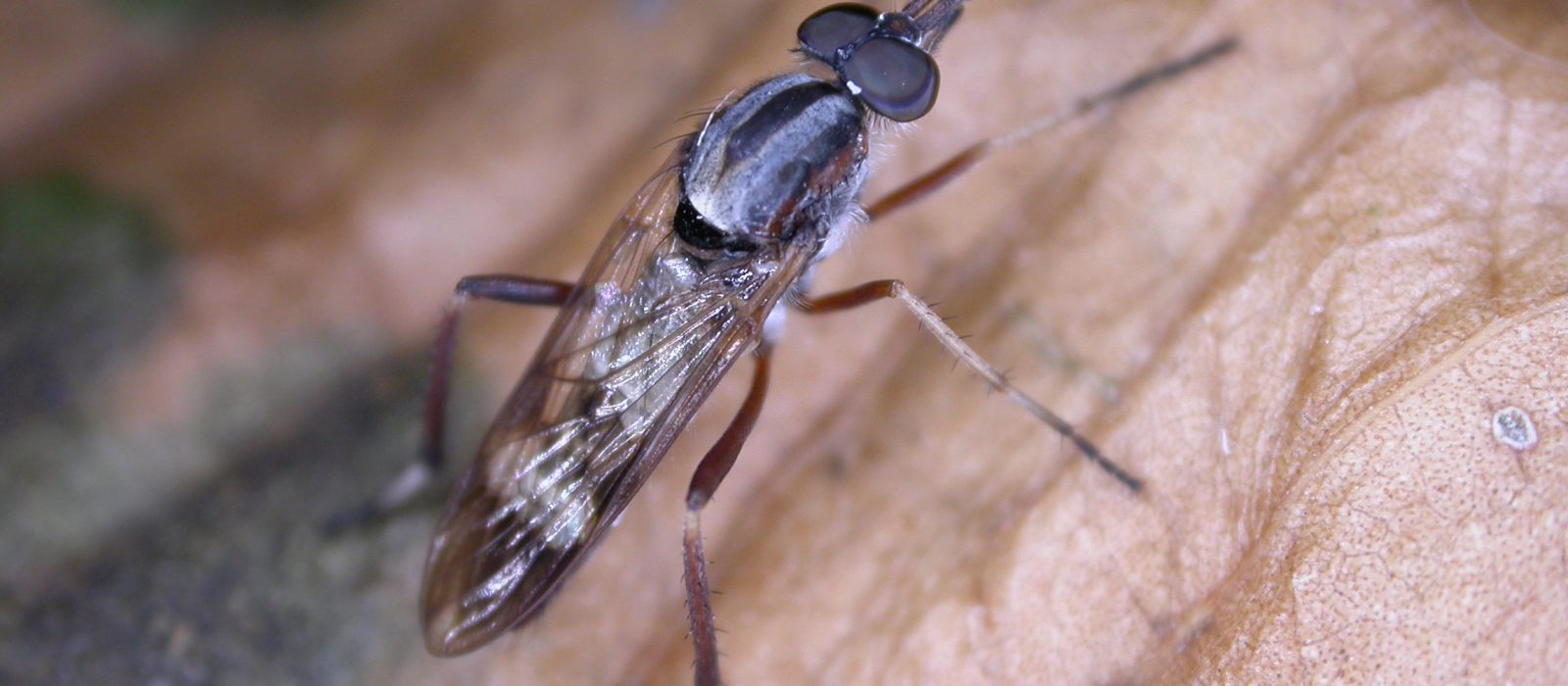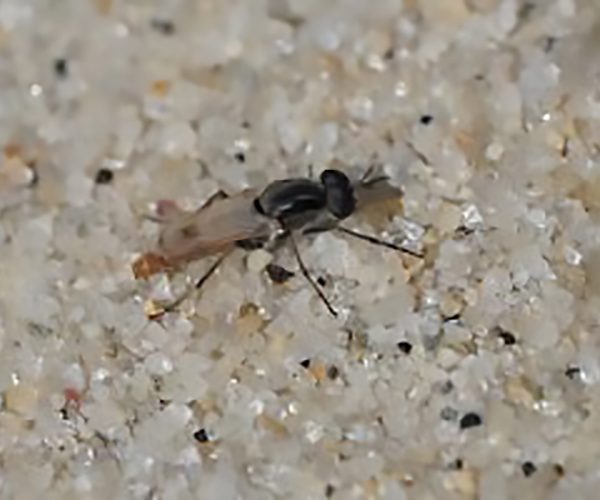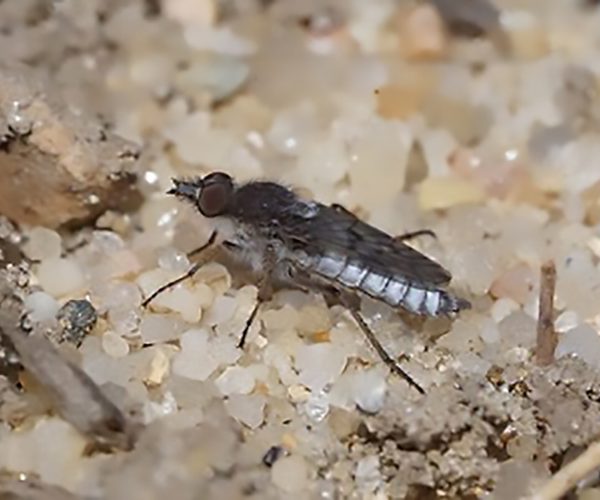Perhaps because of their elongated shape, members of the fly family Therevidae have acquired the common name “stiletto flies.” This is a smallish fly family, widespread but said to be most diverse in Australia; bugguide reports only 150 species in this family known in North America. Many stiletto flies prefer dry, sandy locations, and, with plenty of those conditions to offer, Martha’s Vineyard seems to be emerging as a particularly good location for finding and studying these insects.
The past week has seen a couple of interesting Therevid discoveries on the Vineyard. One, a member of the genus Cerocatus, was found close to the shoreline at Sheriff’s Meadow Foundation’s Cedar Tree Neck preserve in West Tisbury. These flies, about a half-inch long with reddish abdomens, could not be identified to the species level from photographs. But experts commenting on iNaturalist were confident of the genus. With our usual caution that “citizen science” records may not accurately reflect the true distribution and abundance of an organism, we can say that Cerocatus appears to be rarely noticed in New England. Bugguide.net has no records at all for this genus its database, and the recent West Tisbury record was only the second one for all of New England in iNaturalist. You can view the iNaturalist record here.
What is probably a much more significant record came from iNat user nsharp, who photographed the stiletto fly Brachylinga morata on a beach in Aquinnah. Again, identification of this insect required input from Therevid experts, and the precise identification rests in part on the fact that B. morata is the only member of the genus known to occur in our region. “Upon checking Webb’s revision of the genus, Brachylinga is quite uncommon along the eastern USA, and as far as I can tell only B. morata is found in the Northeast. The description fits this guy too,” noted iNat user shaun-winterton in a comment on the post. The description “quite uncommon” is supported by community science data: Bugguide.net has only one record for this entire genus, that one from Arizona, and iNat has no previous records at all for B. morata. You can view the remarkable Aquinna record for B. morata here.
These records illustrate the power of community science tools like iNaturalist. Amateur observers, equipped with binoculars, cameras (often cell phone cameras), and a healthy dose of curiosity, explore the natural world and upload what they find to the iNaturalist website. Experts, wherever they may be in the world, are able to view those reports and add, correct, or confirm identifications. Such collaboration of amateurs and professionals can greatly expand our understanding of what insects occur where. And, in cases like the ones described here, they can highlight the important role that Martha’s Vineyard plays in supporting biodiversity.
Get Involved
You can add to the Martha’s Vineyard Atlas of Life, and help build understanding and appreciation of the Vineyard’s distinctive biodiversity, by setting up an iNaturalist account and uploading your wildlife photographs into iNat. Sightings from the Vineyard automatically enter the Atlas of Life project, which you can explore here. You can use iNat either through the iNat smartphone app or on the iNat website on a computer. It’s easy, it’s fun, and it makes a meaningful contribution to science.
Matt Pelikan is the director of the Martha’s Vineyard Atlas of Life program at BiodiversityWorks.


